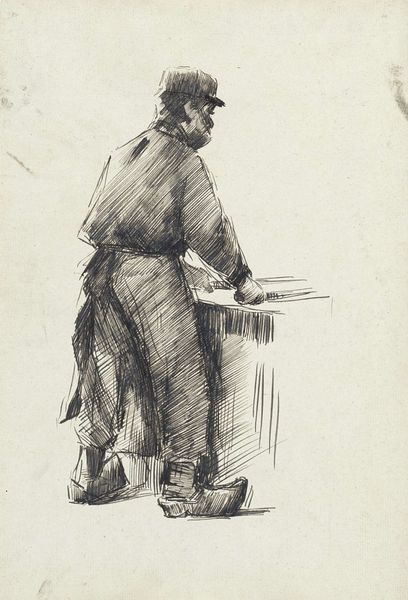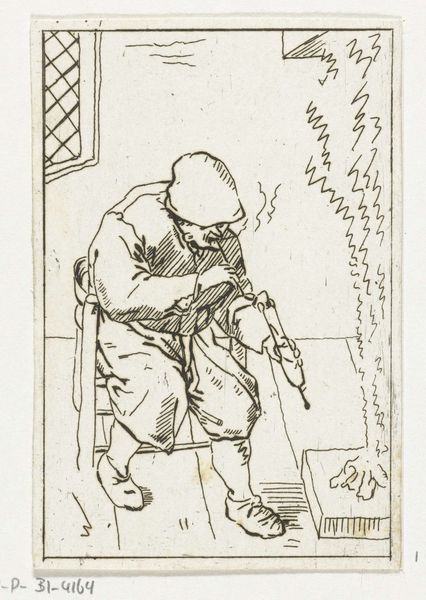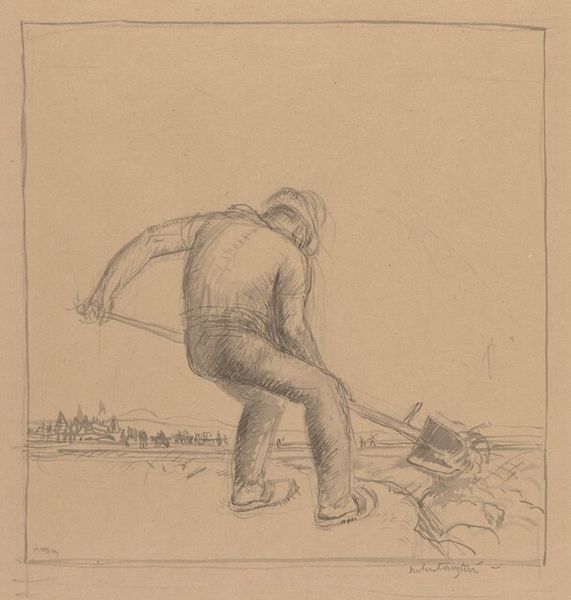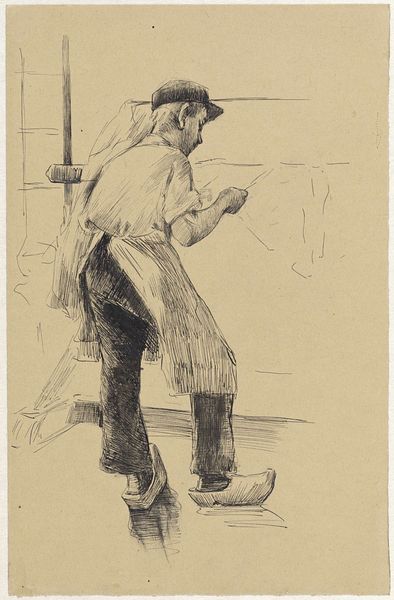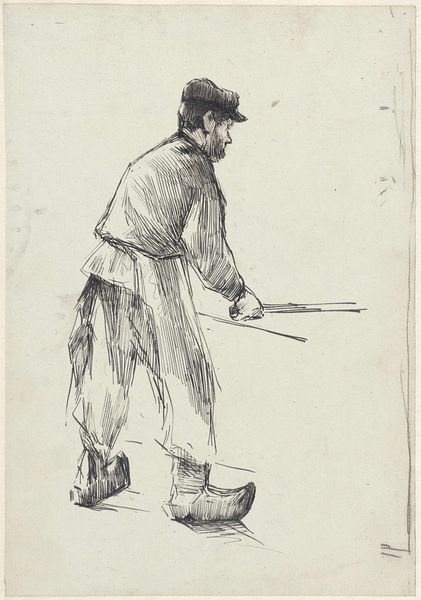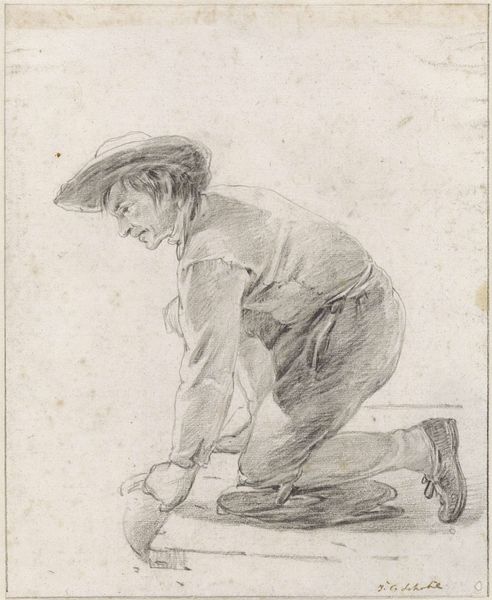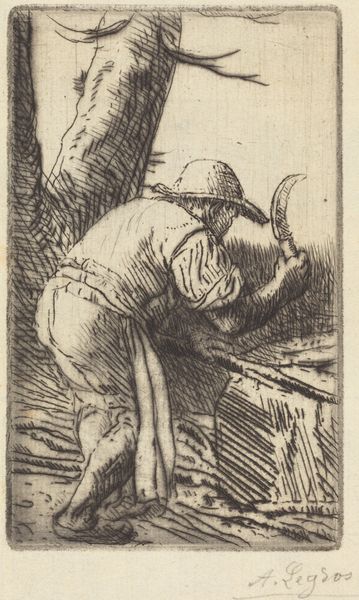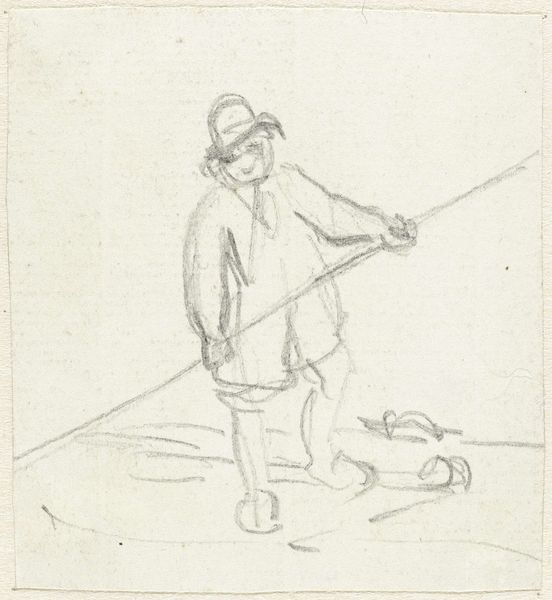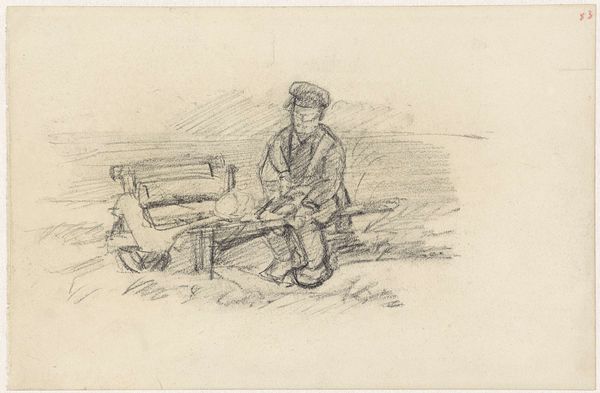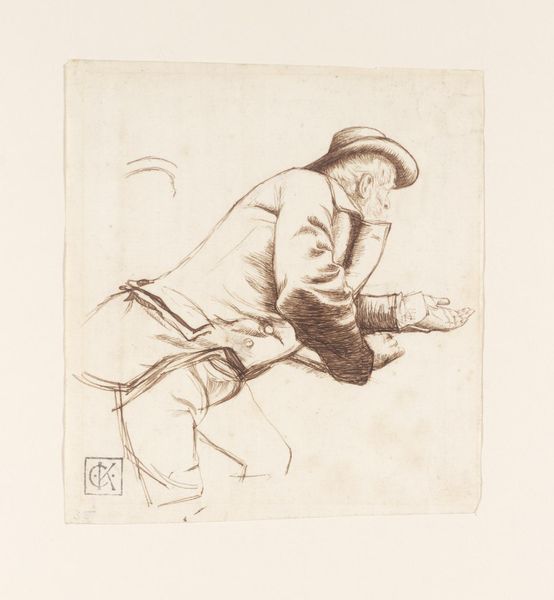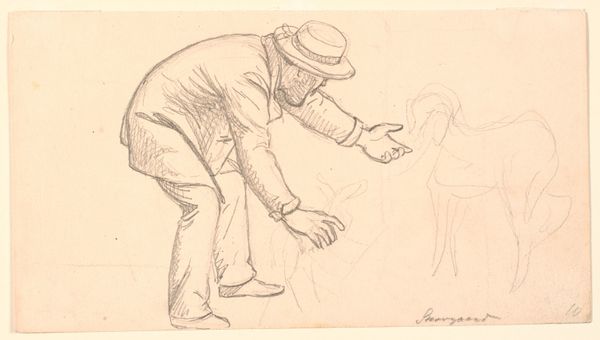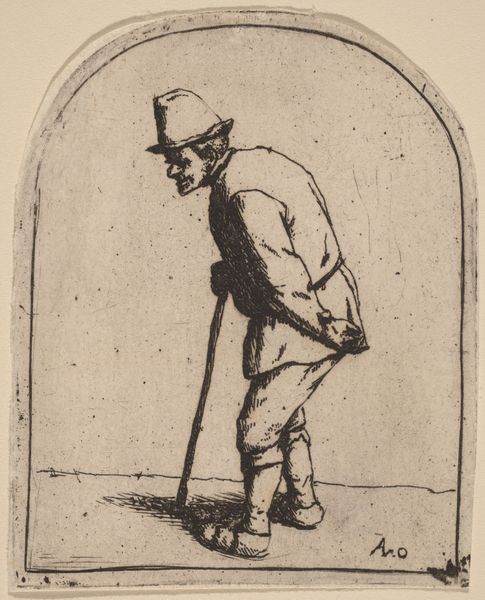
drawing, pencil, pen
#
drawing
#
toned paper
#
light pencil work
#
pen sketch
#
pencil sketch
#
landscape
#
figuration
#
personal sketchbook
#
ink drawing experimentation
#
romanticism
#
pen-ink sketch
#
pencil
#
line
#
sketchbook drawing
#
pen
#
genre-painting
#
storyboard and sketchbook work
#
sketchbook art
#
realism
Dimensions: height 227 mm, width 250 mm
Copyright: Rijks Museum: Open Domain
Editor: This is "Zagende man" by Jean Bernard, a drawing from 1826 at the Rijksmuseum. I'm struck by how ordinary the subject is – just a man sawing wood – yet there's a delicate quality to the line work that elevates it. How do you interpret this work? Curator: I see this drawing as a valuable document of its time. Consider the Romantic era in which it was created; there's an interest here not just in portraying the worker, but perhaps in idealizing labor, even as the Industrial Revolution began to reshape social structures. Note how the figure is rendered with careful attention to detail, despite the mundane activity. Who does this figure represent? Is it about glorifying labor, or is it a commentary on the changing social landscape of the time? Editor: That’s interesting. I hadn't thought about it in terms of idealizing labour. It almost romanticizes the individual worker, as if emphasizing the importance of skilled craftsmanship in an increasingly industrialized world. Curator: Precisely. And notice the details – the hat, the neatly stacked wood scraps. This is not presented as a scene of abject poverty. How do we reconcile this seemingly celebratory depiction with the realities faced by many laborers in the 19th century? Can we see an intention by the artist of underlining a social statement about the dignity of labour, or pointing out a potential source of tension? Editor: I hadn’t considered that potentially critical reading. So, by analyzing these details, we can start to understand the social and political contexts in which Bernard was working? Curator: Exactly. By understanding those contexts, we reveal the inherent power dynamics represented—or not—in this seemingly simple scene. What appears on the surface as a neutral depiction gains significance through that understanding. Editor: I see it so differently now. It is an insightful way to reflect on the dignity and socio-political context surrounding labour, and the romanticism of working during an era that sees industrial growth.
Comments
No comments
Be the first to comment and join the conversation on the ultimate creative platform.
